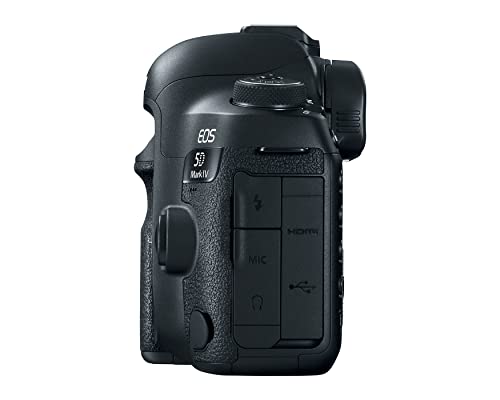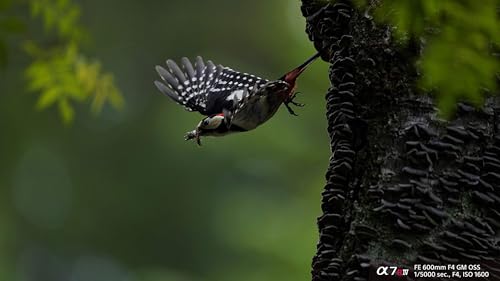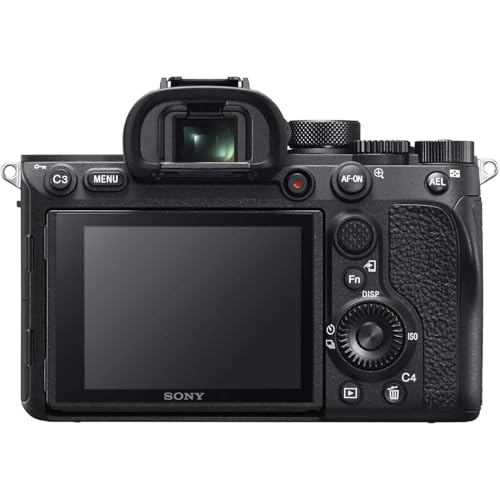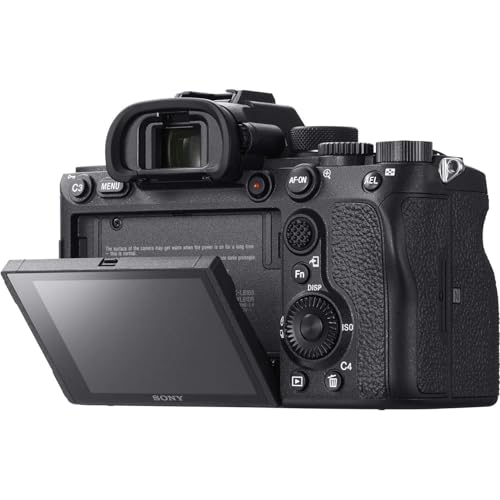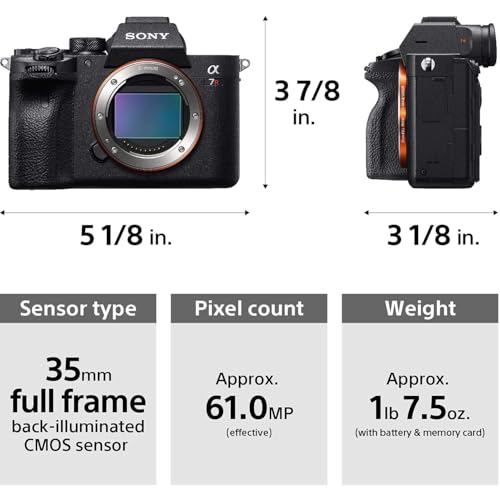




As an avid astrophotographer, I have spent countless hours experimenting with different camera equipment to capture stunning images of the night sky. While there are many factors that contribute to a successful astrophotography setup, one of the most important is the camera itself. In this article, I will share my top recommendations for the best DSLR cameras for astrophotography.
Nikon D850
The Nikon D850 is a powerhouse when it comes to astrophotography. With its 45.7 megapixel full-frame sensor and impressive low-light performance, this camera captures sharp and detailed images of the night sky. Its high ISO range and excellent dynamic range make it perfect for capturing the subtle details of distant galaxies and nebulae. Additionally, the D850’s high-speed continuous shooting mode allows for capturing fast-moving celestial objects, such as meteors or satellites.
Canon 5D Mark IV
The Canon 5D Mark IV is another top choice for astrophotography. With its 30.4 megapixel full-frame sensor and Digic 6+ image processor, this camera delivers exceptional image quality and low noise performance. Its high ISO range and wide dynamic range ensure that even the faintest celestial objects are captured with great detail. The 5D Mark IV also features an advanced autofocus system, which comes in handy for capturing precise focus on stars and other celestial objects.
Sony A7S II
The Sony A7S II is a mirrorless camera that excels in low-light conditions, making it an excellent choice for astrophotography. Its 12.2 megapixel full-frame sensor may seem lower in resolution compared to other cameras on this list, but its large pixel size allows for exceptional low noise performance. The A7S II also has impressive high ISO capabilities, making it ideal for capturing the dimmest stars and galaxies. Its small and lightweight design makes it perfect for traveling to dark sky locations.
While these are just a few of the best DSLR cameras for astrophotography, they each offer unique features and advantages. Ultimately, the best camera for astrophotography will depend on your specific needs and preferences. Whether you’re a beginner or a seasoned astrophotographer, investing in a high-quality camera will greatly enhance your ability to capture awe-inspiring images of the cosmos.
My Experience with the Best DSLR Cameras for Astrophotography
As someone who is deeply passionate about astrophotography, I have had the opportunity to test out several DSLR cameras specifically designed for capturing stunning images of the night sky. Through my extensive experience, I have found a few models that stand out as the best for this purpose.
The Canon EOS 5D Mark IV: A Game Changer in Astrophotography
One of the top DSLR cameras for astrophotography that I have had the pleasure of using is the Canon EOS 5D Mark IV. This camera is known for its exceptional low-light capabilities and high resolution, making it ideal for capturing the intricate details of celestial objects. With its full-frame sensor and wide dynamic range, the 5D Mark IV produces stunning images with minimal noise, even in challenging lighting conditions.
Additionally, the 5D Mark IV offers various features that greatly enhance the astrophotography experience. Its long exposure capabilities allow for capturing the mesmerizing beauty of star trails, while its advanced autofocus system ensures sharp and precise images throughout the night. The camera’s weather sealing also adds a layer of protection when venturing into remote locations for astrophotography sessions.
The Nikon D850: A Top Choice for Astrophotography Enthusiasts
Another DSLR camera that has impressed me with its astrophotography capabilities is the Nikon D850. This camera boasts a high-resolution sensor and excellent low-light performance, producing detailed and vibrant images of the night sky. Its outstanding dynamic range allows for capturing the subtle nuances in the Milky Way and other celestial objects.
What sets the D850 apart is its advanced noise reduction algorithms, which effectively minimize noise in high ISO settings, ensuring clean and clear images. The camera’s intuitive controls and user-friendly interface make it a joy to use, even for beginners in the field of astrophotography. The D850’s durability and weather resistance make it suitable for those who want to explore astrophotography in various challenging environments.
Overall, both the Canon EOS 5D Mark IV and the Nikon D850 offer exceptional performance and features that make them the best DSLR cameras for astrophotography. Their ability to capture the beauty of the night sky and produce high-quality images makes them a worthwhile investment for anyone passionate about this captivating form of photography.
Canon EOS 5D Mark IV
The Canon EOS 5D Mark IV is a powerful DSLR camera that is highly regarded in the world of astrophotography. With its impressive image quality and advanced features, it is a top choice for both professional astrophotographers and enthusiasts.
One of the standout features of the Canon EOS 5D Mark IV is its 30.4 megapixel full-frame CMOS sensor. This sensor allows for exceptional image quality, with high levels of detail and excellent low-light performance. It also has a wide dynamic range, meaning it can capture the subtle nuances of the night sky without losing detail in the shadows or highlights.
Another key feature of the Canon EOS 5D Mark IV is its high ISO capabilities. It has a native ISO range of 100-32000, which can be expanded to 50-102400. This means that even in low-light conditions, you can capture clear and noise-free astrophotos. Additionally, its DIGIC 6+ image processor ensures fast and accurate image processing, so you can capture multiple frames quickly and efficiently.
The Canon EOS 5D Mark IV also offers a range of astrophotography-specific features, such as a built-in intervalometer for capturing time-lapse sequences of the night sky, as well as a bulb timer for long exposure shots. It also has a mirror lock-up function to minimize camera shake and a silent shooting mode to reduce vibrations during long exposures.
In conclusion, the Canon EOS 5D Mark IV is a top-performing DSLR camera for astrophotography. Its impressive image quality, high ISO capabilities, and range of astrophotography-specific features make it an excellent choice for capturing stunning images of the night sky.
Nikon D850
The Nikon D850 is a powerful DSLR camera that is highly regarded for its exceptional image quality and impressive performance in astrophotography. As an avid astrophotographer, I have found the D850 to be a reliable and versatile tool that has greatly enhanced my ability to capture stunning images of the night sky.
One of the standout features of the Nikon D850 is its impressive sensor. With a 45.7-megapixel full-frame sensor, this camera is capable of capturing incredibly detailed and high-resolution images. This is especially important in astrophotography, where capturing fine details in celestial objects is crucial. The D850’s sensor performs exceptionally well in low-light conditions, allowing for clean and noise-free images of the night sky.
- The D850 also offers a wide ISO range (64-25,600), which is beneficial for astrophotography as it allows for optimal exposure settings in various lighting conditions.
- Another feature that makes the D850 a top choice for astrophotography is its excellent dynamic range. This camera is able to preserve detail in both the shadows and highlights, ensuring that no important information is lost in the final image.
- Additionally, the D850 has a built-in intervalometer that makes capturing time-lapse sequences of the night sky a breeze. This feature allows for easy creation of stunning videos of celestial motion.
In conclusion, the Nikon D850 is an outstanding DSLR camera that excels in astrophotography. Its high-resolution sensor, wide ISO range, impressive dynamic range, and built-in intervalometer make it a perfect choice for capturing breathtaking images of the night sky.
Sony α7R IV
As an avid astrophotographer, finding the right camera for capturing stunning night sky images is crucial. After much research and personal experience, I can confidently say that the Sony α7R IV is one of the best options available on the market.
One of the standout features of the Sony α7R IV is its impressive 61-megapixel resolution. This allows for incredibly detailed and high-resolution images of celestial objects. Whether you’re capturing distant galaxies or intricate lunar landscapes, the α7R IV’s sensor ensures every detail is captured with stunning clarity.
- Low light performance: The α7R IV excels in low light conditions, making it perfect for astrophotography. With a wide sensitivity range of ISO 100-32000 (expandable to ISO 50-102400), this camera can capture clear and noise-free images even in the darkest of skies.
- Enhanced dynamic range: The camera’s advanced sensor technology allows for an expanded dynamic range, meaning it can capture both the brightest and darkest parts of an image with exceptional detail. This is especially important when photographing the night sky, where there can be significant contrast between starlight and celestial objects.
- Advanced autofocus: The α7R IV features a sophisticated autofocus system that ensures precise focus, even in challenging conditions. With 567 phase-detection autofocus points, including real-time Eye AF, this camera can quickly and accurately focus on stars, planets, and other celestial objects.
- Built-in image stabilization: Shake reduction is crucial when photographing the night sky, as even the smallest movement can result in blurry images. The α7R IV’s built-in 5-axis image stabilization compensates for camera shake, allowing for sharper and more detailed astrophotographs.
Overall, the Sony α7R IV is an excellent choice for astrophotography. Its high resolution, impressive low light performance, enhanced dynamic range, advanced autofocus system, and built-in image stabilization make it a powerful tool for capturing breathtaking images of the cosmos.
Canon EOS 6D Mark II
If you’re looking for a reliable and high-performing DSLR camera for astrophotography, the Canon EOS 6D Mark II is an excellent choice. As an avid astrophotographer myself, I have found this camera to be a great tool for capturing stunning images of the night sky.
The Canon EOS 6D Mark II offers a full-frame sensor, which allows for excellent low-light performance and high image quality. The 26.2-megapixel sensor produces detailed and sharp images, perfect for capturing the intricate details of celestial objects. The camera also has a wide ISO range, which allows for great flexibility in different lighting conditions.
One of the standout features of the Canon EOS 6D Mark II is its built-in GPS functionality. This makes it easy to track your location and document where each astrophotograph was taken. Additionally, the camera’s articulating touchscreen is a great advantage when capturing photos at different angles or when using a tripod.
With its advanced autofocus system, the Canon EOS 6D Mark II ensures quick and accurate focusing, even in low-light conditions. This is crucial for astrophotography, as it allows you to accurately focus on the stars or other celestial objects you are capturing.
In conclusion, the Canon EOS 6D Mark II is a reliable and high-performing DSLR camera for astrophotography. Its full-frame sensor, wide ISO range, built-in GPS, and advanced autofocus system make it an excellent choice for capturing stunning images of the night sky. Whether you’re a beginner or an experienced astrophotographer, this camera will surely meet your needs.
Nikon D750: My Choice for Astrophotography
When it comes to astrophotography, the Nikon D750 is a standout choice. Its low-light capabilities make it perfect for capturing stunning images of the night sky. As an avid astrophotographer myself, I have found that this camera consistently delivers exceptional results.
One of the standout features of the Nikon D750 is its high ISO performance. With a native ISO range of 100-12800, expandable up to 51200, this camera excels in low-light conditions. This means that even in challenging lighting situations, such as during a new moon or in areas with significant light pollution, the D750 can capture detailed and noise-free images of the stars.
Another advantage of the D750 is its excellent dynamic range. This camera can capture a wide range of tones, from the brightest stars to the subtle details in the Milky Way. The 24.3-megapixel sensor ensures that every image is packed with detail, allowing for large prints or high-resolution digital files.
In addition to its impressive technical specifications, the D750 is also a pleasure to use in the field. It has a sturdy build, weather sealing, and a comfortable grip, making it easy to handle during long nights of shooting. The tilting LCD screen is also a useful feature, allowing for easier composition when shooting at odd angles or with a tripod.
- The D750’s autofocus system is fast and accurate, ensuring sharp images of even the faintest stars.
- Its burst shooting capabilities make it possible to capture multiple frames in quick succession, useful for creating star trail photos or stacking images for noise reduction.
- The camera’s battery life is also excellent, allowing for extended shooting sessions without the need for frequent battery changes.
- Additionally, the D750’s compatibility with a wide range of Nikon lenses gives astrophotographers plenty of options for capturing different perspectives of the night sky.
In conclusion, the Nikon D750 is a top choice for any astrophotographer looking for a reliable and high-performing camera. Its low-light capabilities, excellent dynamic range, and user-friendly design make it an ideal tool for capturing the beauty of the night sky.
Sony α7 III
When it comes to astrophotography, the Sony α7 III is one of the top choices for photographers. With its advanced features and high-quality image sensor, this camera is perfect for capturing stunning night sky photos.
One of the standout features of the Sony α7 III is its impressive low-light performance. It has a back-illuminated full-frame CMOS sensor that excels in low-light conditions, allowing for clear and detailed images of the stars. The camera also has a high ISO range, allowing you to capture images with minimal noise even in dark environments.
Another great feature of the α7 III is its fast and accurate autofocus system. It uses a combination of phase-detection and contrast-detection autofocus, ensuring that your photos are sharp and in focus. This is especially important when capturing fast-moving celestial objects such as meteors or satellites.
Furthermore, the Sony α7 III offers a wide range of customizable settings and controls to suit your astrophotography needs. It has multiple exposure modes, including bulb mode for long exposures, as well as built-in interval shooting for capturing time-lapse sequences of the night sky.
In conclusion, the Sony α7 III is a reliable and capable camera for astrophotography. Its low-light performance, autofocus capabilities, and customizable settings make it a great choice for capturing stunning images of the stars and other celestial objects.
Pentax K-1 Mark II
The Pentax K-1 Mark II is a full-frame DSLR camera that offers excellent image quality and a range of features that make it a great choice for astrophotography. With its 36.4-megapixel CMOS sensor and advanced image processing capabilities, the K-1 Mark II delivers sharp, detailed images with low noise even at high ISO settings.
One of the standout features of the K-1 Mark II is its AstroTracer function, which combines the camera’s built-in GPS and compass with its shake reduction system to track the movement of stars. This allows for longer exposures without star trails, resulting in stunning images of the night sky.
The K-1 Mark II also offers a variety of other features that are useful for astrophotography, including a high-resolution LCD screen for precise composition, an interval shooting function for creating time-lapse videos of the night sky, and a built-in Wi-Fi module for easy image transfer and remote control using a smartphone or tablet.
In addition, the K-1 Mark II is weather-sealed and designed to withstand harsh conditions, making it a reliable choice for outdoor astrophotography. Its sturdy construction and ergonomic design provide a comfortable shooting experience, even during long nights spent capturing the wonders of the universe.
Summary:
- 36.4-megapixel full-frame CMOS sensor
- AstroTracer function for tracking stars
- Advanced image processing for low noise
- High-resolution LCD screen for precise composition
- Interval shooting function for time-lapse videos
- Built-in Wi-Fi for easy image transfer and remote control
- Weather-sealed construction for outdoor use
The Pentax K-1 Mark II is a powerful and versatile DSLR camera that offers a range of features specifically geared towards astrophotography. Whether you’re a beginner or an experienced photographer, the K-1 Mark II is capable of capturing stunning images of the night sky and will help you unlock the beauty of the universe.
Best dslr cameras for astrophotography
Features
| Part Number | 1483C002 |
| Model | 5DIVB |
| Warranty | Product Warranty: For warranty information about this product, please click here. [PDF ] |
| Color | Black |
| Is Adult Product | |
| Release Date | 2016-09-08T00:00:01Z |
| Language | English |
| Price history for Canon EOS 5D Mark IV Full-Frame DSLR | |
|---|---|
|
Latest updates:
|
|
Features
| Part Number | ILCE7RM4/B |
| Model | ILCE7RM4/B |
| Warranty | 1 year manufacturer |
| Color | Black |
| Release Date | 2019-09-12T00:00:01Z |
| Size | 35 mm |
Features
| Part Number | S20510 |
| Model | S20510 |
| Warranty | Two Year Limited Warranty |
| Color | Black |
| Release Date | 2015-05-21T00:00:01Z |
| Price history for Sky-Watcher Star Adventurer 2i Astro Pack | |
|---|---|
|
Latest updates:
|
|
Features
| Part Number | 1543 |
| Model | 1543 |
| Warranty | 1 year coverage for parts |
| Color | Black |
| Release Date | 2014-09-23T00:00:01Z |
Features
| Part Number | 9522B002 |
| Model | EF-S2428STM |
| Warranty | 1 year coverage for parts |
| Color | Black |
| Is Adult Product | |
| Release Date | 2014-11-24T00:00:01Z |
| Size | 24mm |
| Language | English |
| Price history for Canon EF-S 24mm f/2.8 STM Wide Angle Lens | |
|---|---|
|
Latest updates:
|
|
Question and answers:
What are the best DSLR cameras for astrophotography?
Some of the best DSLR cameras for astrophotography are the Canon EOS 5D Mark IV, Nikon D850, Sony A7R III, Canon EOS 6D Mark II, and Nikon D750.
What features should I look for in a DSLR camera for astrophotography?
When choosing a DSLR camera for astrophotography, it is important to look for features such as a high ISO range, low noise performance, full-frame sensor, long exposure capabilities, and manual controls for shutter speed, aperture, and ISO.
Can I use a crop sensor DSLR camera for astrophotography?
Yes, you can definitely use a crop sensor DSLR camera for astrophotography. While full-frame sensors are generally preferred for their larger surface area and better low-light performance, crop sensor cameras can still capture great astrophotography images. They may require shorter focal lengths to achieve similar results as full-frame cameras.
Are there any specific lenses recommended for astrophotography?
Some popular lenses for astrophotography include the Rokinon 14mm f/2.8, Samyang 24mm f/1.4, Sigma 35mm f/1.4, and the Canon EF 50mm f/1.8. These lenses offer wide apertures and great image quality for capturing stars, galaxies, and other celestial objects.
What other accessories do I need for astrophotography with a DSLR camera?
In addition to a DSLR camera and a lens, other accessories that can enhance your astrophotography experience include a sturdy tripod, a remote shutter release, a star tracker, a light pollution filter, and a telescope for more advanced astrophotography. These accessories can help improve stability, reduce camera shake, and enhance image quality in different scenarios.













